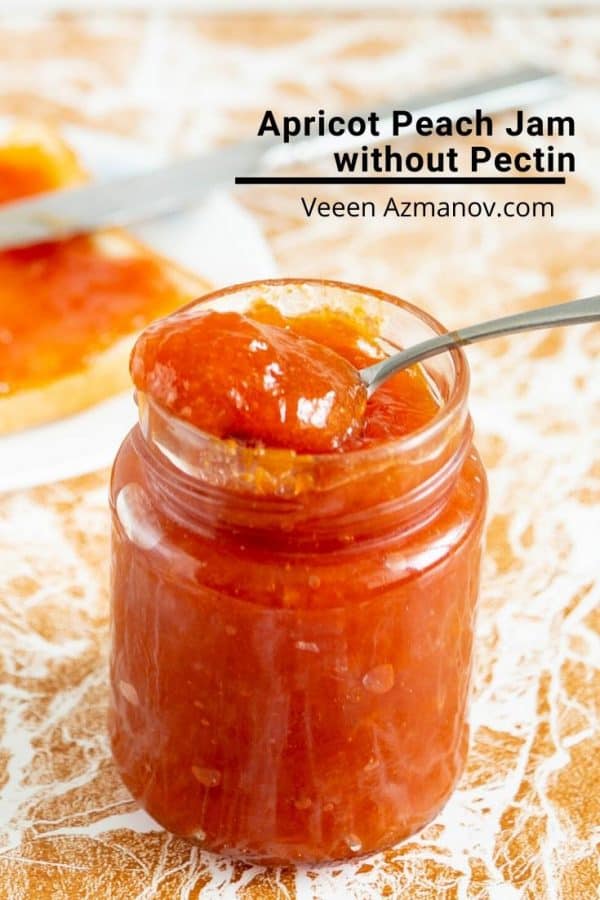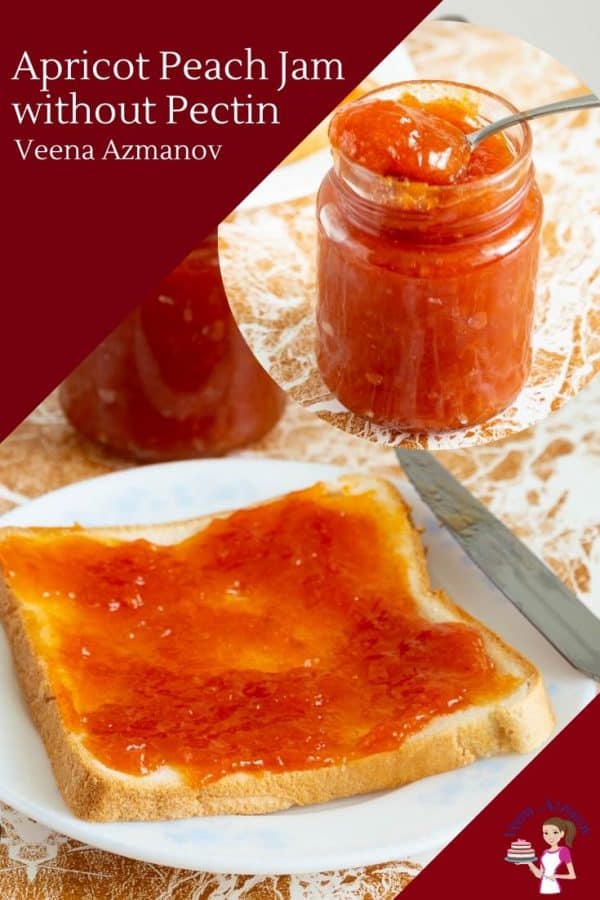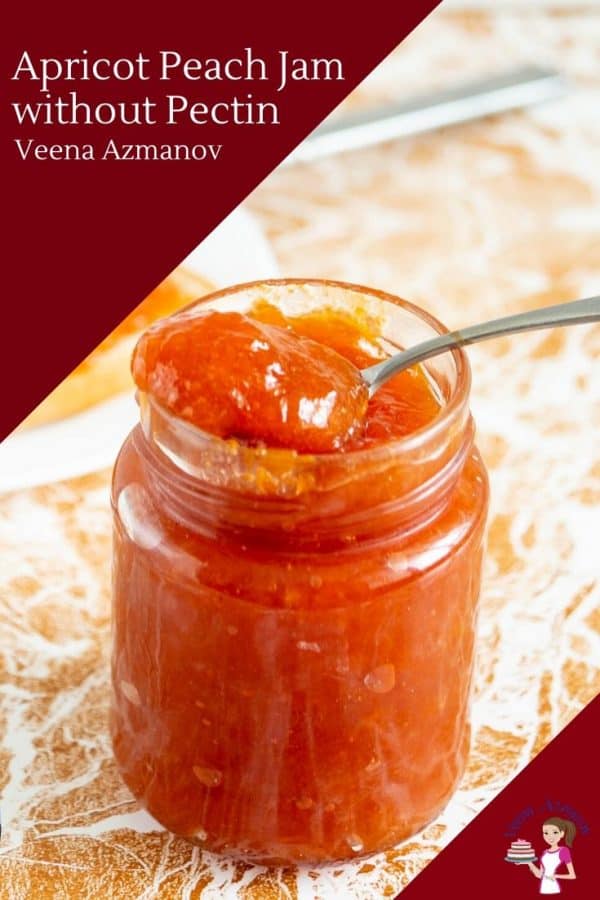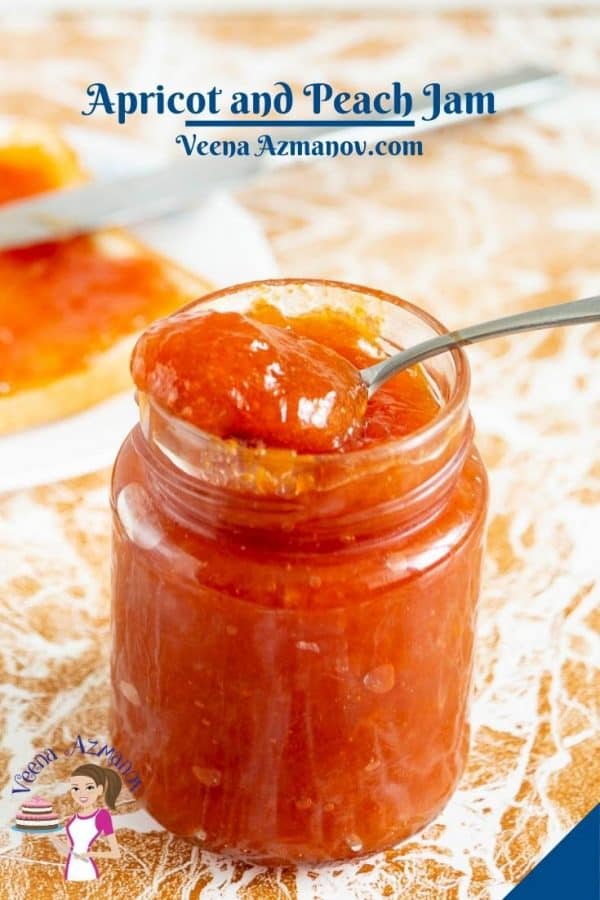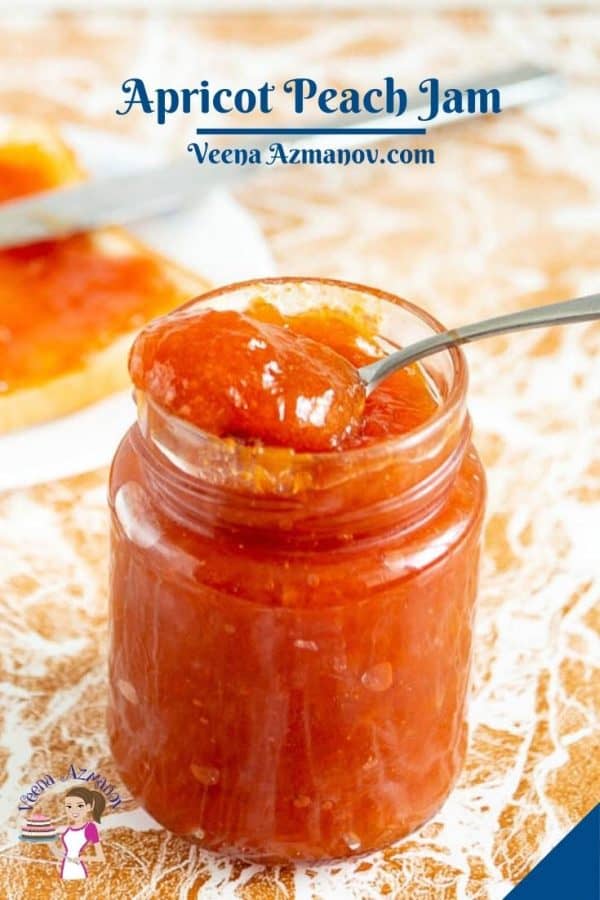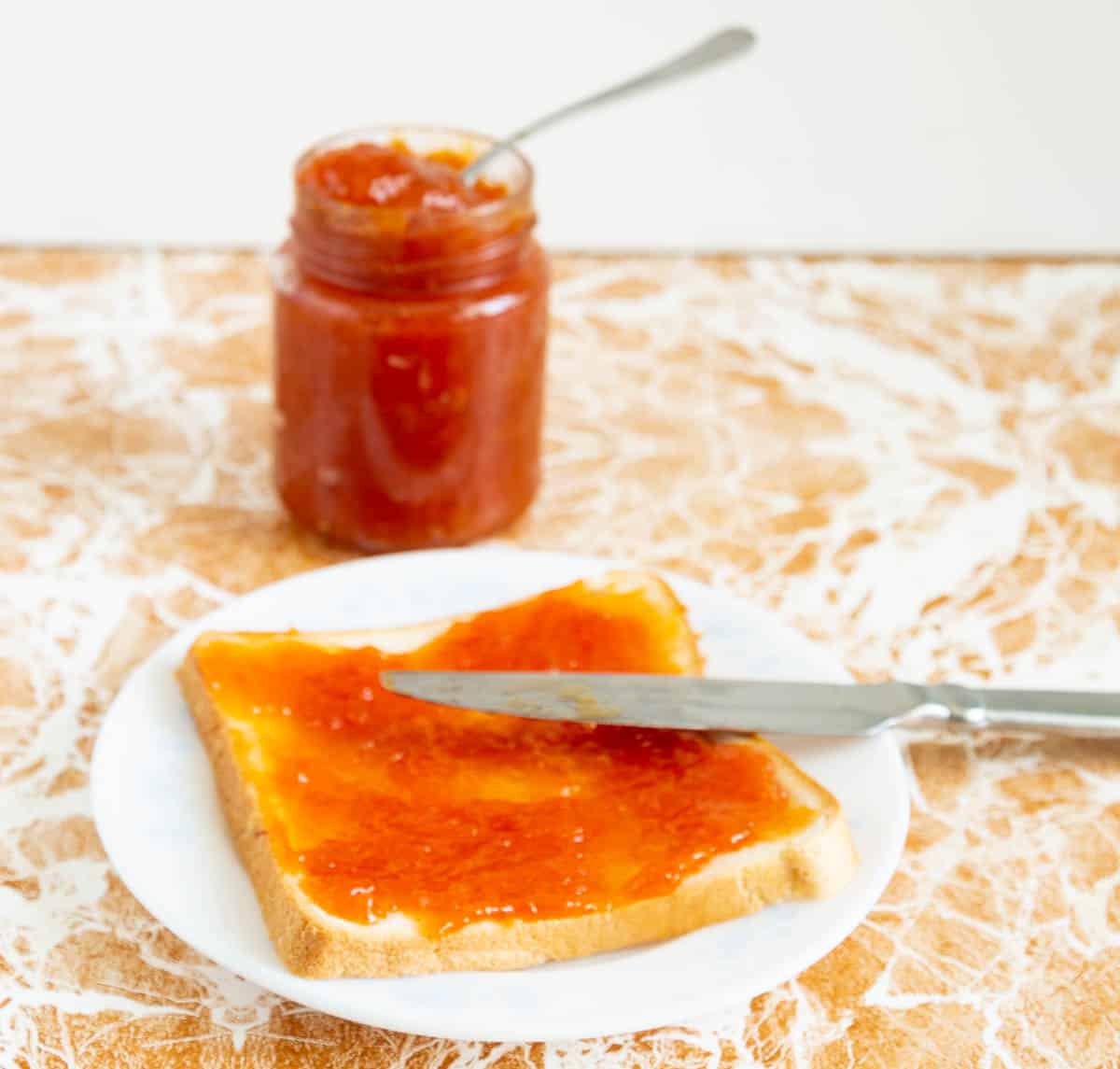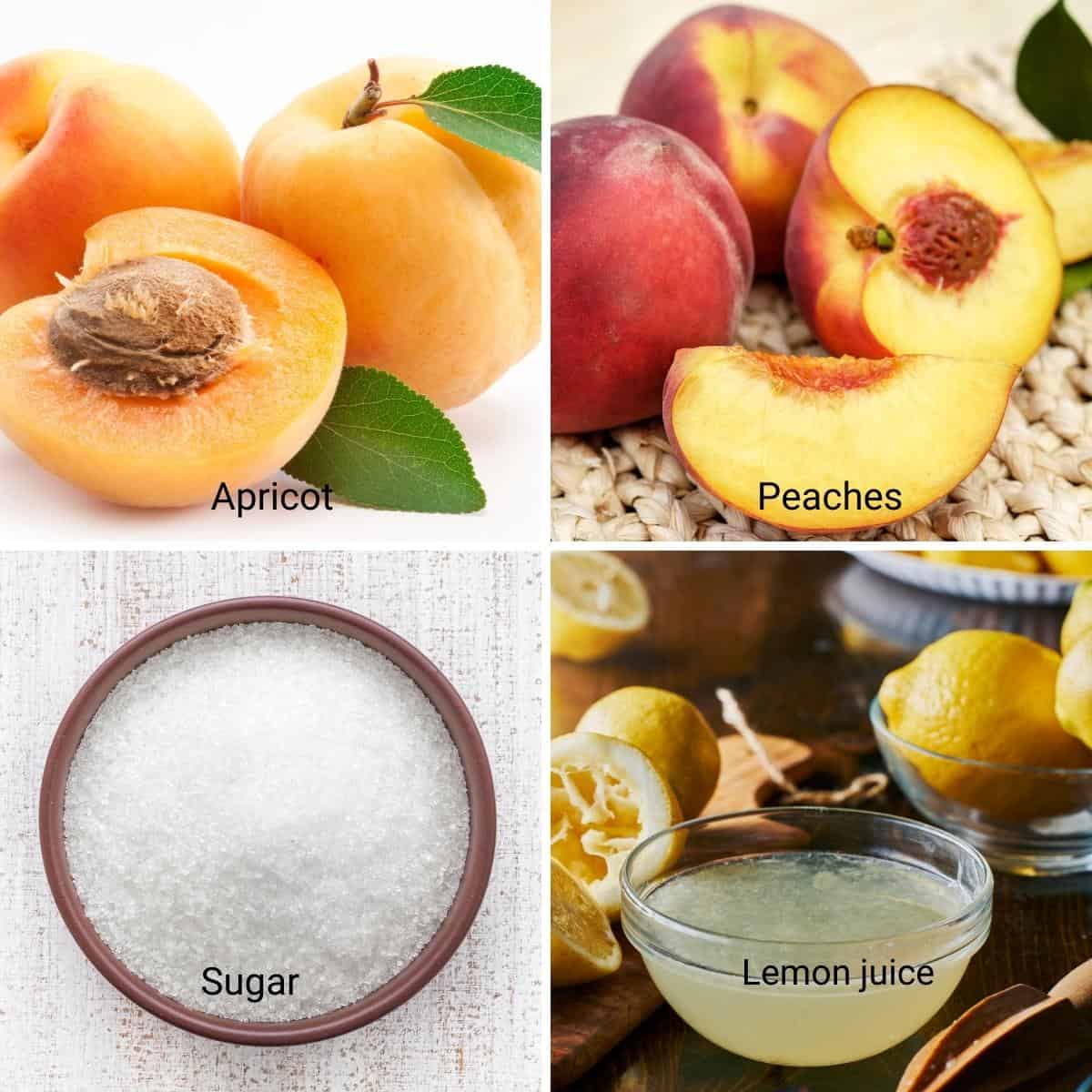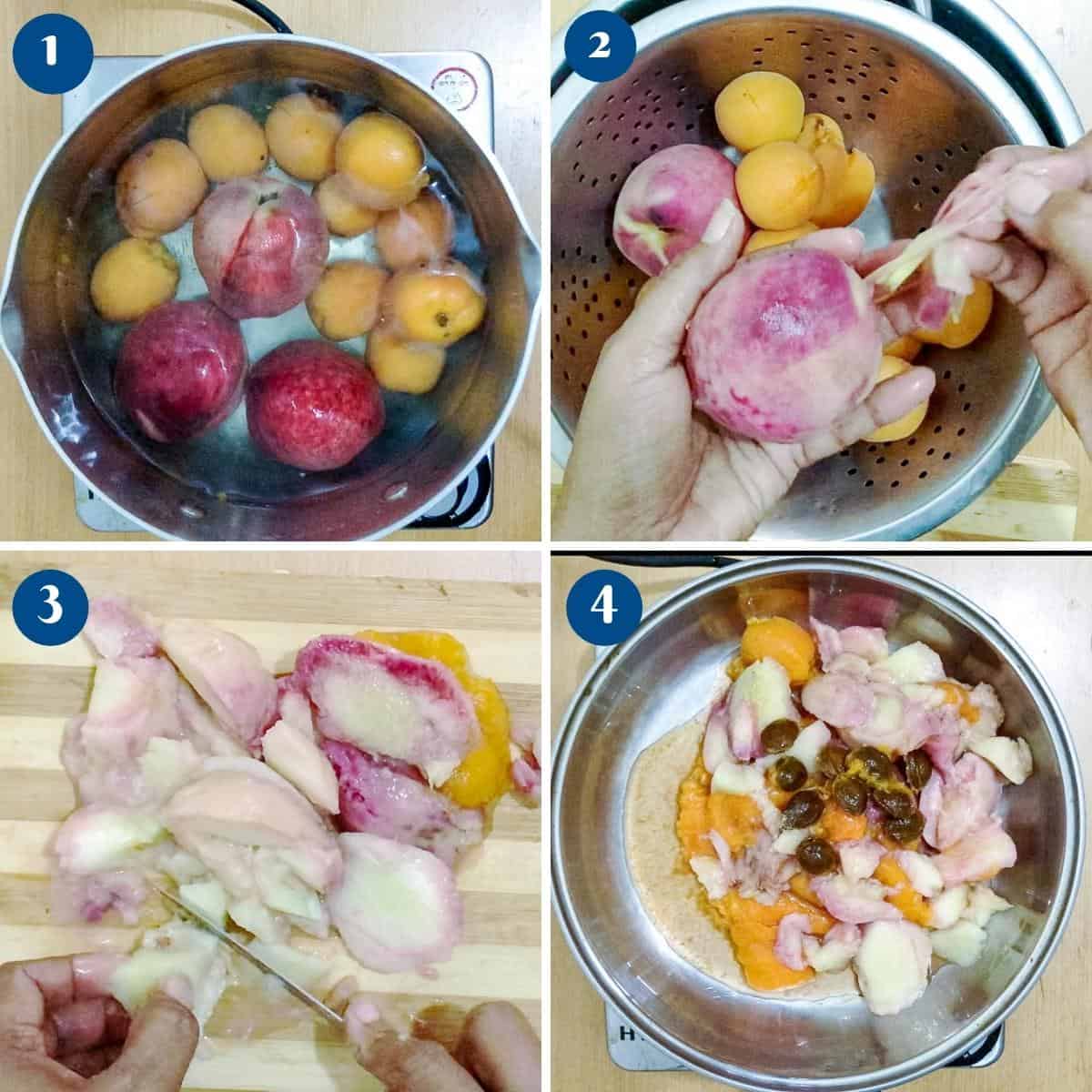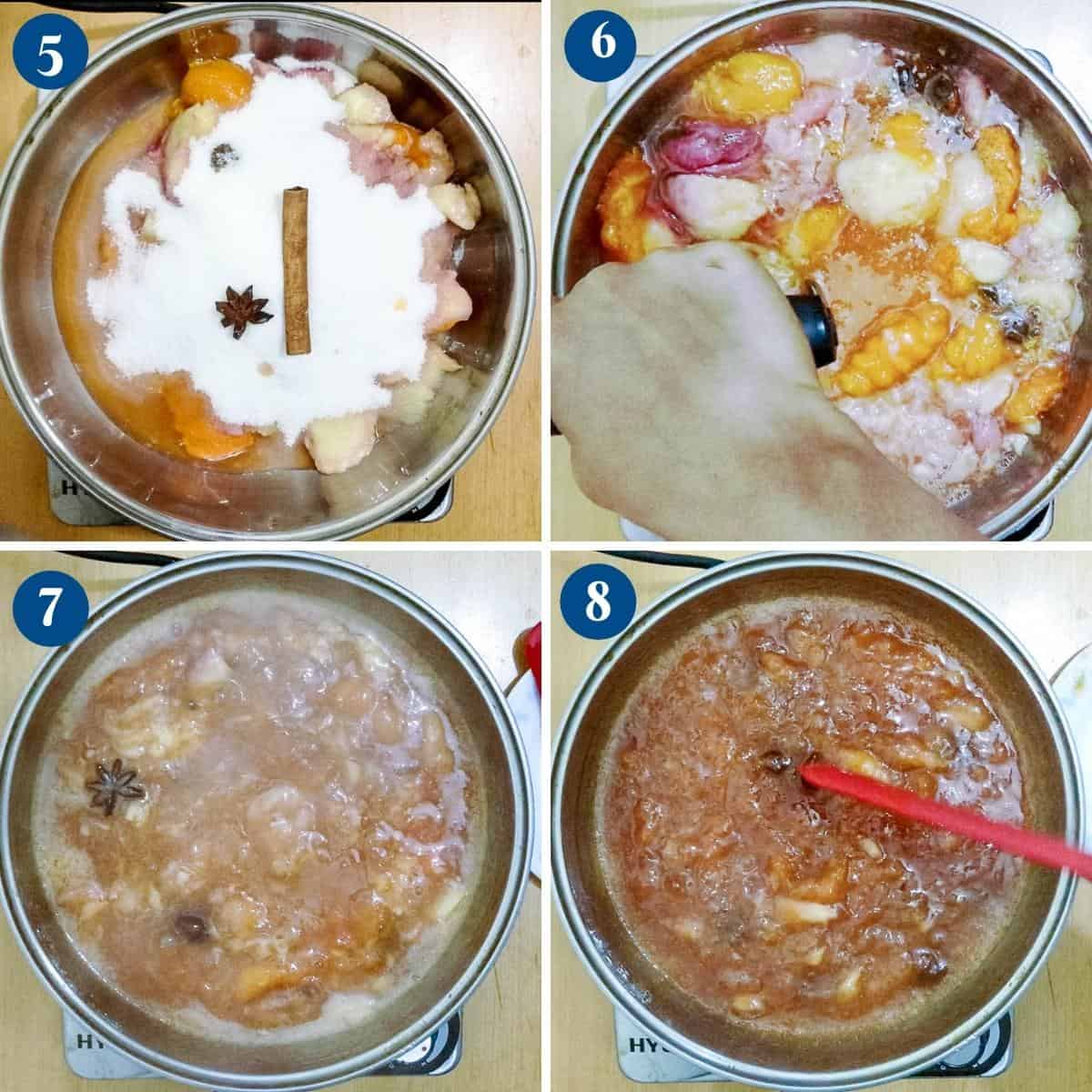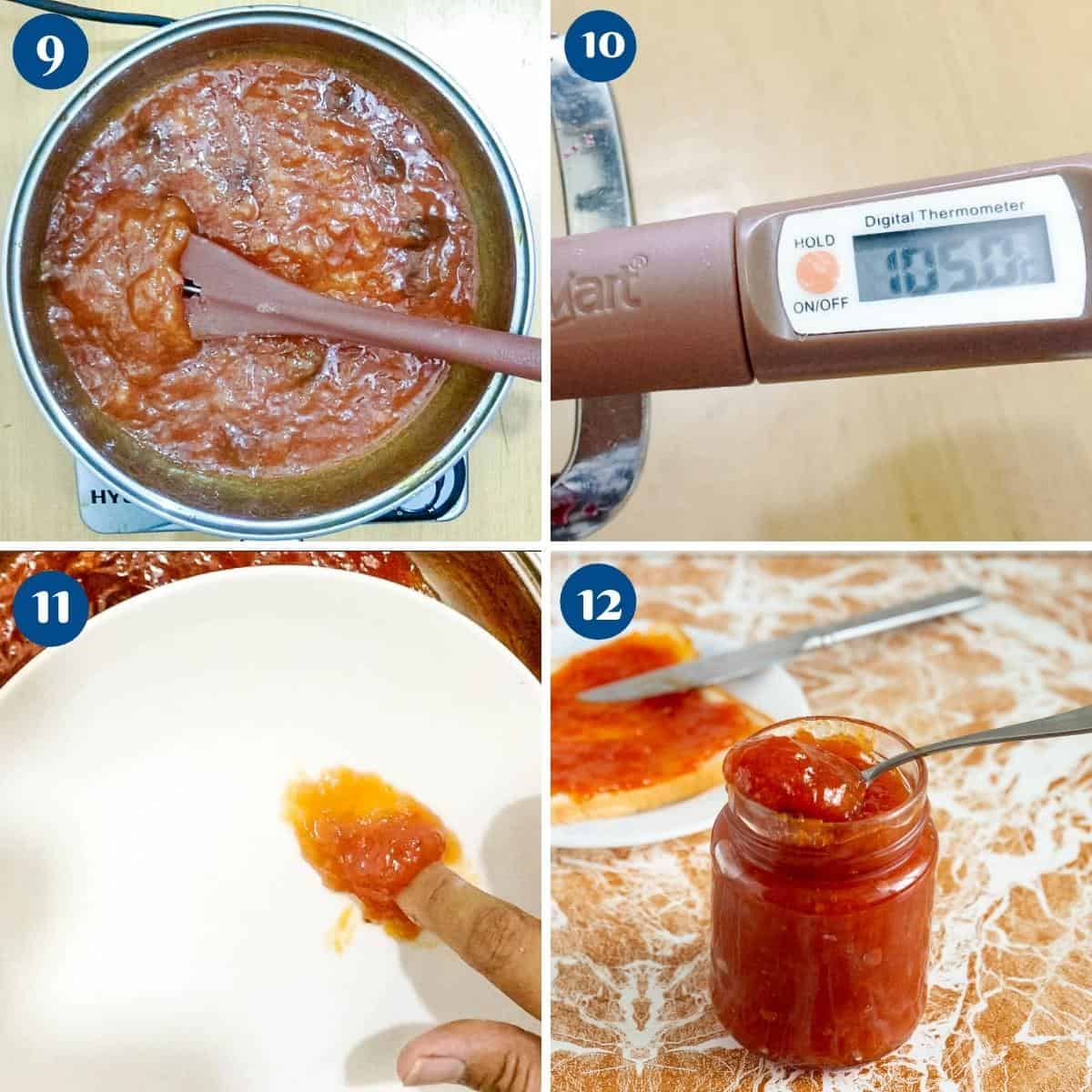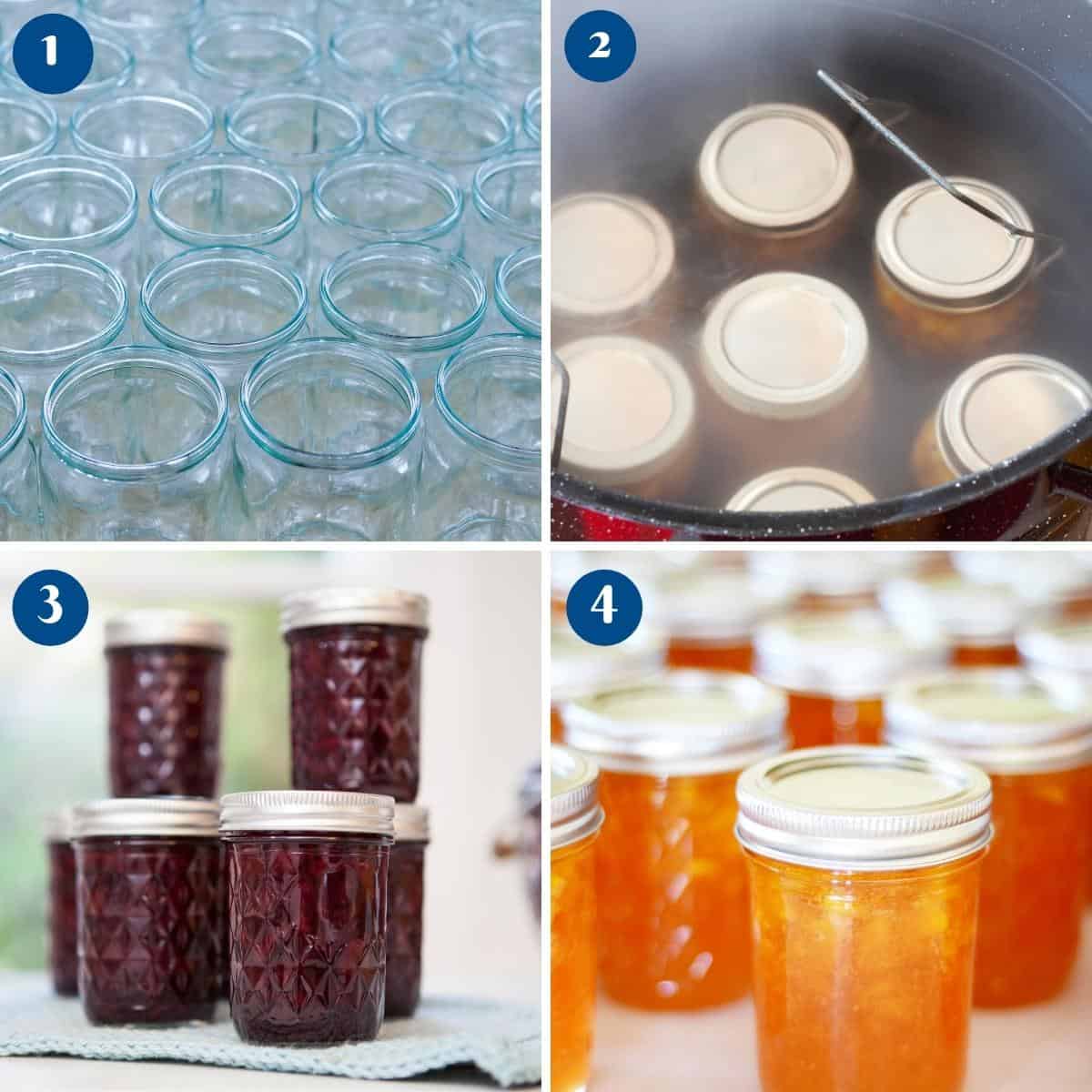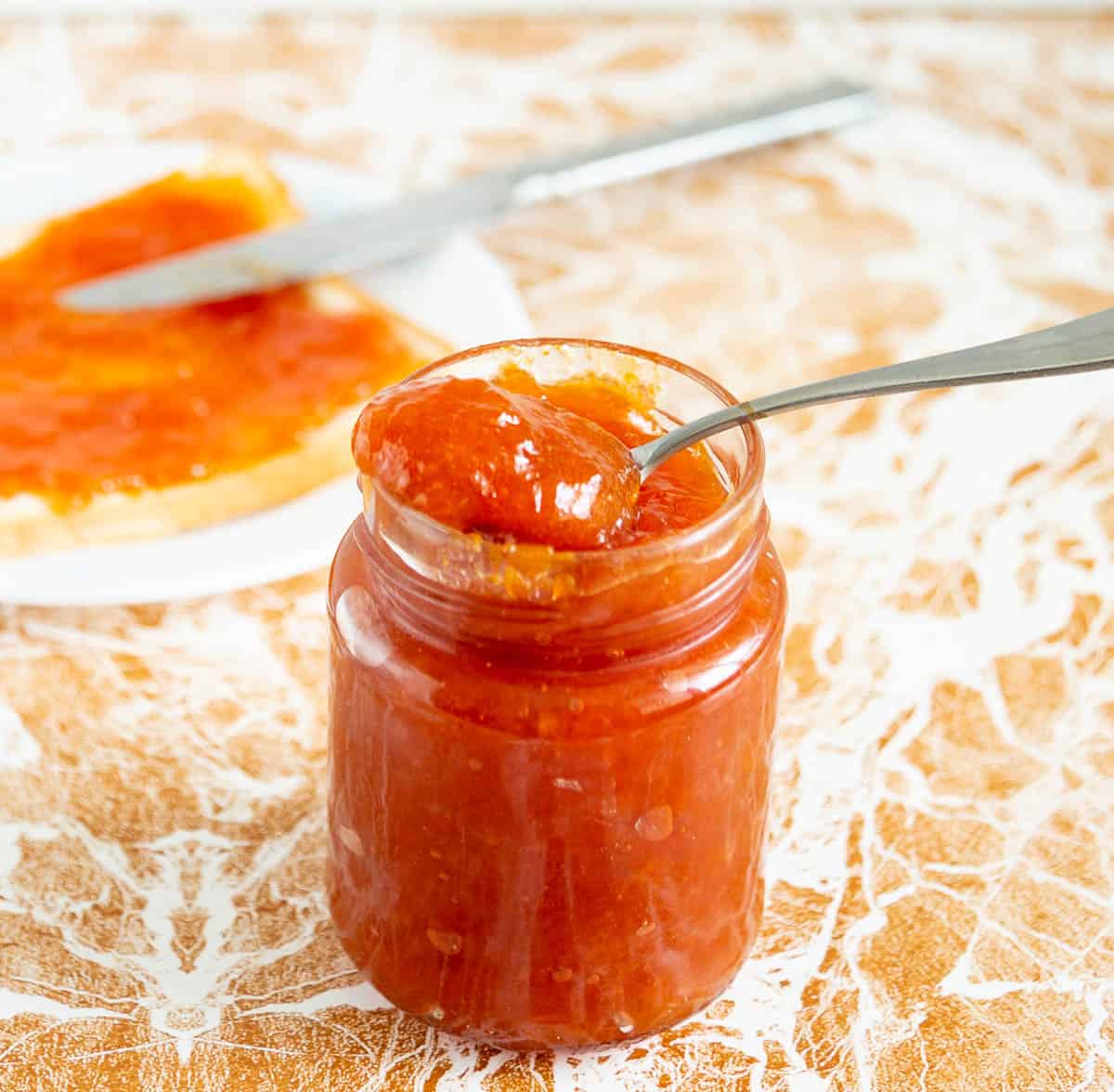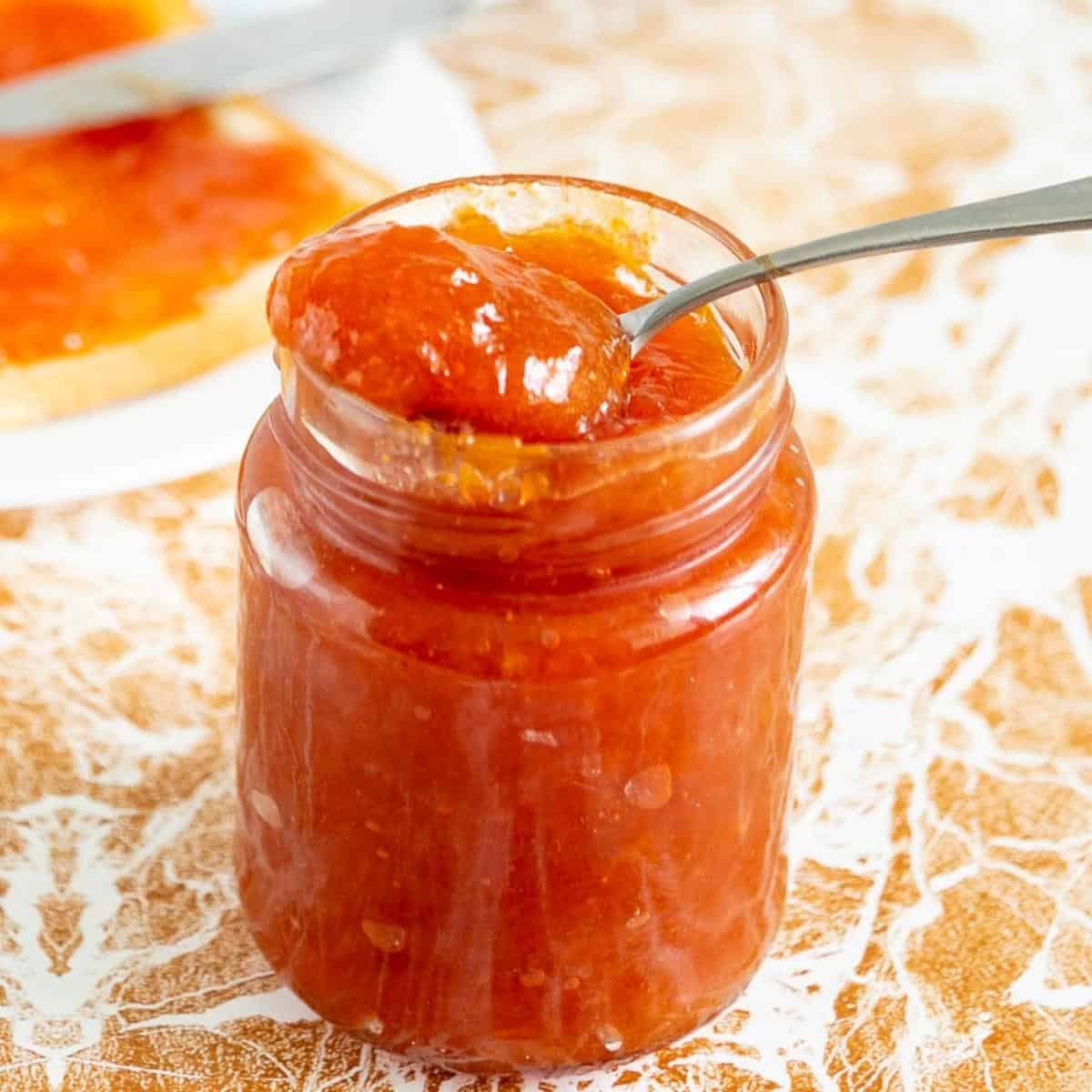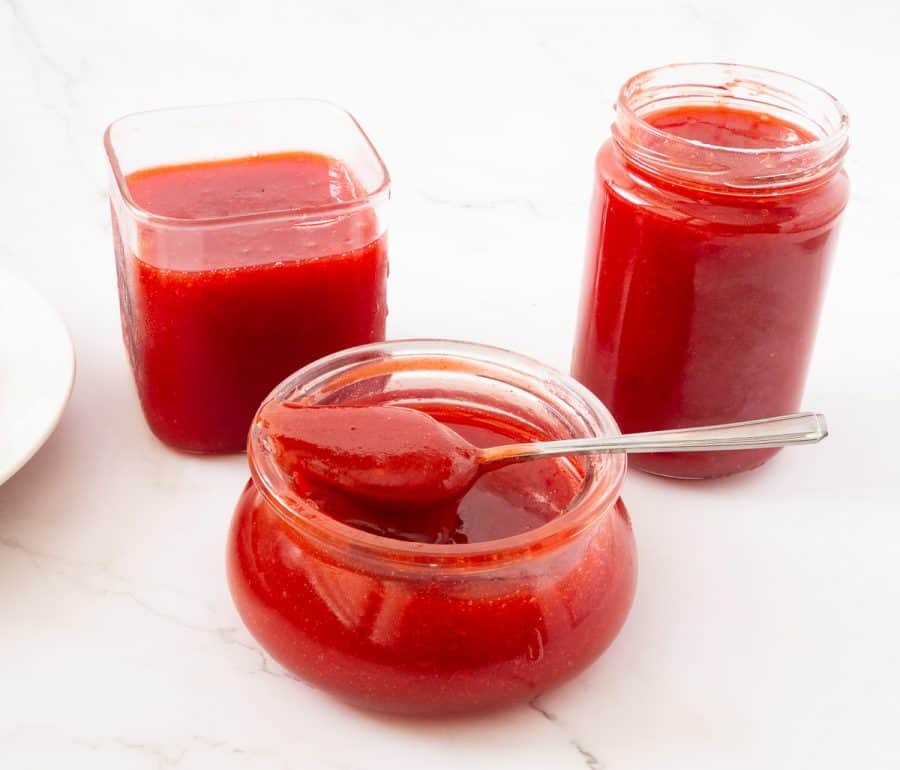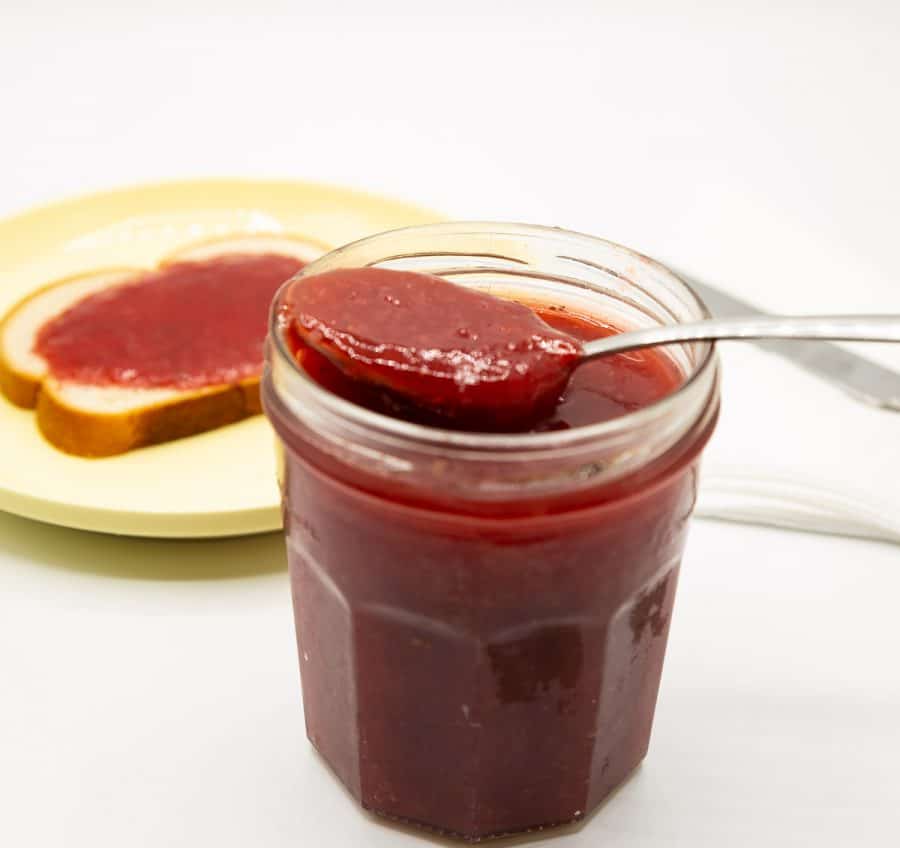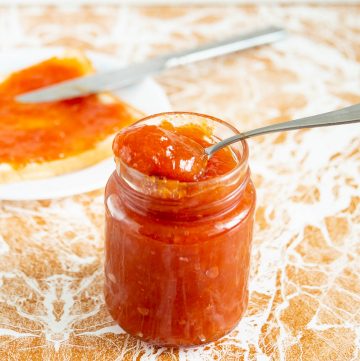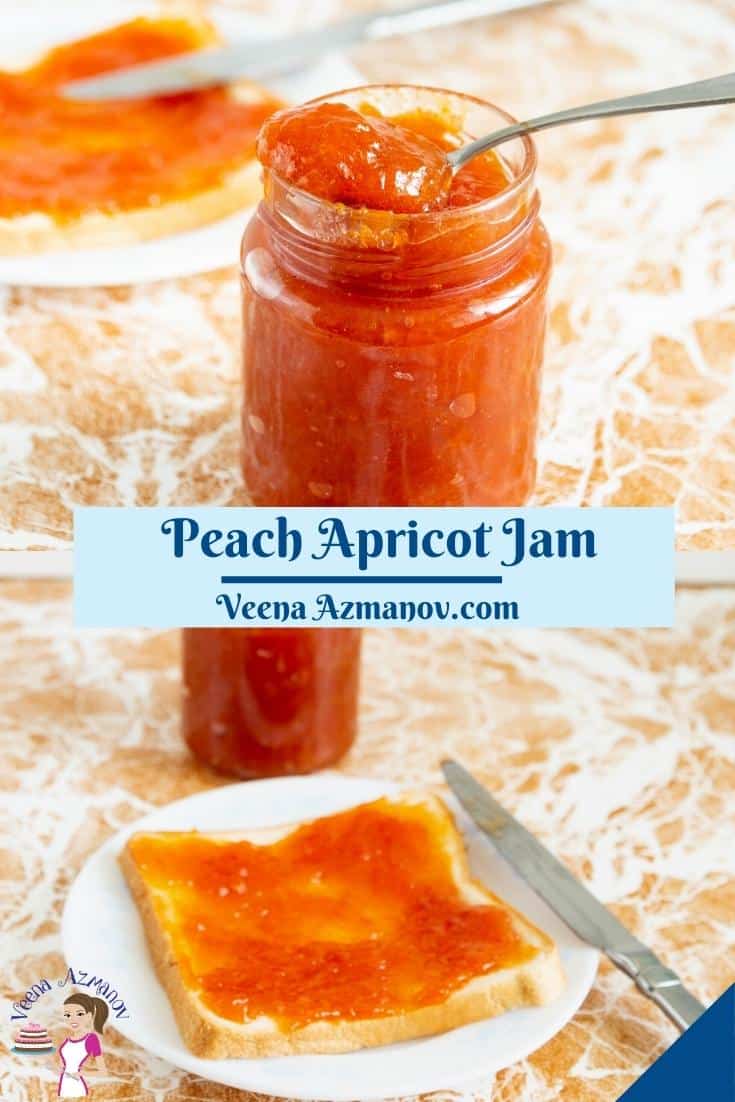Homemade jam always reminds me of Mom. As a kid, I’d sit on the dining table surrounded by loads of fruit while she sorted them. Back then, my favorite part of jam-making was mashing the fruit with my little hands. Unlike me, Mom always prepared her jam mixture the night before and let the fruit and sugar macerate in the fridge overnight. She said it made for a softer, more delicious jam.
Why make this homemade jam?
Apricot jam is absolutely delicious. And, the peach jam is also absolutely delicious, but the combination of the two is absolute heaven. It’s a must-try if you love stone-fruit jams. No-fail method – This recipe is simple and easy. And if you’ve never made homemade jam, you will definitely start now. No- canning – This homemade recipe is without the fuss of canning. Just pour the jam into sterilized jars and save them in the fridge or freezer. However, I have given you the detailed process for canning too. No pectin – Ideally, you can make jam with just two ingredients: fruit and sugar. Because most fruits have natural acidity and pectin. And yet, adding lemon juice helps break down the skin. Low-sugar – Fresh apricots and peaches are naturally soft and sweet. So, you don’t need to add a lot of sugar to this jam.
Step-by-step: Apricot peach jam
Mark an X on the bottom of the apricots and peaches. Then, blanch them in hot water for 5 minutes. Peel and remove but do not discard the seeds/pits. Roughly chop the fruits and set them aside.Pro tip – Marking an X on the fruit helps to peel them easily as the skin shrinks when blanching.
Place two small ceramic plates in the freezer so we can test the jam later. Alternatively, you can use a candy thermometer to check the jam’s doneness. In a heavy bottom pan, combine the chopped fruit (and a few kernels), sugar, salt, and lemon juice. Also, add the star anise and cinnamon stick if using.Pro tip – If you are using fruits with skin on, let the fruits macerate in sugar and lemon juice for a few hours before cooking. This softens the skin considerably. Cook on medium heat until the sugar is dissolved. Then, turn the heat up and let the mixture come to a boil. Let it boil for two minutes on medium-high.Pro tip – Boiling the jam is important as it releases pectin from the skin and seeds in fruits. Then, turn the heat to medium-low. The jam should still be simmering but at a low simmer, not bubbling. Mash the fruit with a vegetable masher for a smoother, jam-like consistency.Pro tip – Mashing the fruit is optional, as it will break down into smaller chunks similar to preserves as it cooks. However, mashing will give a smoother consistency, like jam. Continue to simmer for about 20 to 30 minutes more, stirring often so it does not stick to the bottom of the pan. The jam will continue to thicken and deepen in color as it cools.Pro tip – The cooking time will depend on the quantity of the jam and the heat applied to it. It’s ok to cook a little longer, but there must be a simmer for the fruit to release pectin.
Testing the jam
Remove one of the ceramic plates from the freezer. Place a teaspoon of jam on the cold plate.Pro tip – The cold plate will help cool the jam almost instantly and give you a good indication if it is ready. Set aside for 2 to 3 minutes, then test with your finger. Simply move/push the jam with your finger. If it wrinkles/crinkles, it means the jam is ready. If not, let the jam cook a couple of minutes more and test again.Pro tip – Depending on how early you start checking, you may need to test the jam on a ceramic plate more than once or twice. Alternatively, you can use a candy thermometer – the jam should reach 105 C / 221 F.Pro tip – I find the thermometer the easiest and fool-proof method to check for doneness. Optional – When you are ready to remove the jam from the heat, add a teaspoon of butter and stir well. Butter helps dissolve foam that accumulates on top of the jam.Pro tip – You don’t need more than one teaspoon of butter to help with the foam. It will also give you that glossy shine. Next, pour the jam into warm sterilized jars, leaving 1/4-inch space from the top. Use a clean, sterilized knife or spatula to move the jam a bit – this will remove any air pockets. Then, place a piece of wax paper on top before you tighten the lid. Clean the rim of the jar with a clean paper towel. Top the lid.Alternatively, use the lid with screw-on rings that come with the canning jars.
The canning process (if you plan to can the jam)
Sterilize the jars
Sterilize 4 x 8 oz (250 g) jars by washing them in hot, soapy water or cleaning them in the dishwasher with a gentle cycle. Then, place them in the oven for 20 minutes at a low 284 F / 140 CPro tip – I find the dishwasher does an excellent job of cleaning, and the oven dries any excess moisture from the bottles. Note – Leave them in the oven until you are ready to use them (you can turn the oven off). Don’t forget to wash and sterilize the bottle lids as well.
Canning process
Place a rack in the bottom of a large stockpot. Fill half the pot with water. Bring the water in the pot to a boil on high heat. Lower the jars over the rack, leaving enough space between them.Pro tip – The water level should be at least an inch above the top of the jars. So, if necessary, pour more boiling water. Bring the water to a boil again. Cover the pot and process/simmer for 15 minutes. Then, carefully remove the jars from the stockpot and place them on a kitchen towel to absorb any excess moisture. Cool completely.Pro tip – The hot jars are very delicate, so make sure to use tongs when taking them out and place them on soft towels to prevent them from breaking. Press the top of the lid to ensure the seal is tight – the lid should not move. Store in a cool dry place.
Storage
If canning, the canned jam will stay in a cool dry place in the pantry for up to a year or even longer. When not canned, the jam will stay at room temperature for a month or more in good weather. You can also keep the jam in the fridge for 3 to 6 months. Label the jar with the name and date so you know what is in it and when you made it.
Frequently asked questions?
Thank you for sharing - Save for later
